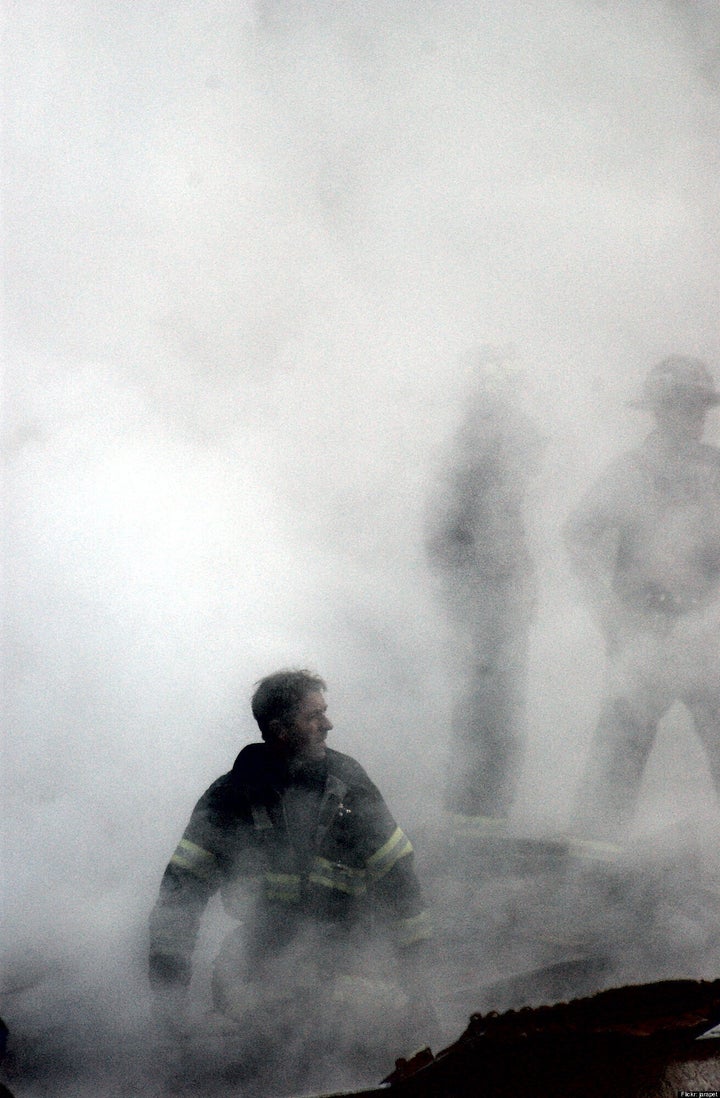
Now that most of the people who are suing the city of New York over the ground zero cleanup have voted to accept a $700 million plus settlement, it's time to take stock of what that signifies and what is likely to come next. The answer may be less than most people hoped for.
Of course, the purpose of a settlement in such heinously complicated litigation is to avoid the even more costly and spirit draining process of actually going to trial. Many of the 10,000 responders who agreed to accept the settlement hope this will lead to some sort of closure, nine long years after the 9/11 attacks.
But I'm afraid that this settlement doesn't really settle much. None of the basic scientific questions about the connection between the dust and disease has been settled. In fact, I fear that things are now more confused than before. The lawsuit represents a long litany of disease, covering more than 350 separate ailments. This is contrary to what is known about environmental hazards. Most, like benzene, are associated with a limited number of specific diseases. At ground zero, anyone who came down with anything has been included.
The big worry is cancer, and the litigation lists 57 different types of cancer among responders, everything from lung cancer -- where the link to the dust seems clear -- to penile cancer, where there is no plausible link.
The settlement doesn't settle any of the questions about cancer, but it does provide a compassionate $100,000 insurance policy that covers anyone who does get cancer in the future. Still, this leaves the majority of the people who were exposed to the dust worried about what will happen to them. And as they age, more will surely become sick and link their diseases to the dust. The settlement suggests one thing, even if science suggests another.
Largely overlooked when it was released in September, the latest comprehensive health report on post-9/11 New York put out by the World Trade Center Medical Working Group, a large team of the top medical investigators in the city and New York State, concluded that the majority of those who worked on the pile, who lived in Lower Manhattan in 2001, and who worked in the offices there, are okay.
The study acknowledges a range of respiratory and gastrointestinal illnesses, and a rash of post traumatic stress. As for cancer, despite the 250 scientific studies that have already been conducted, no one has found an increased risk of cancer. That doesn't mean any conclusions have been reached. Far from it. Exposure to known carcinogens can take decades to lead to cancer. Basically, this report found that it is just too early to tell one way or the other.
But that seems to have done little to relieve people of the worry that they are doomed to get sick because they responded to the call for help in 2001. Nor will the federal legislation now facing an uphill battle before the Senate rid them of uncertainty. The so-called Zadroga bill, which passed the House in September, is supposed to provide both treatment and compensation for thousands of responders and other New Yorkers exposed to the dust. Under the provisions of the bill, those who are sick, or who become sick, qualify for medical care and financial awards. But as the bill is now written, cancer is not included in the list of diseases that automatically qualify a responder for treatment and compensation.
The bill does take into account the evolving state of science and includes a mechanism to add certain types of cancer to the list of eligible disease if a formal review of new scientific data makes a link to the dust plausible.
It seems likely that the list of diseases linked to ground zero will be less than the 350 claimed in the lawsuits, but greater than what is in the Zadroga bill now, although no one knows for certain how long the list will get to be. Meanwhile, for the sake of all those who breathed in the dust, we should be prepared to understand and put into the proper context all that we already know.